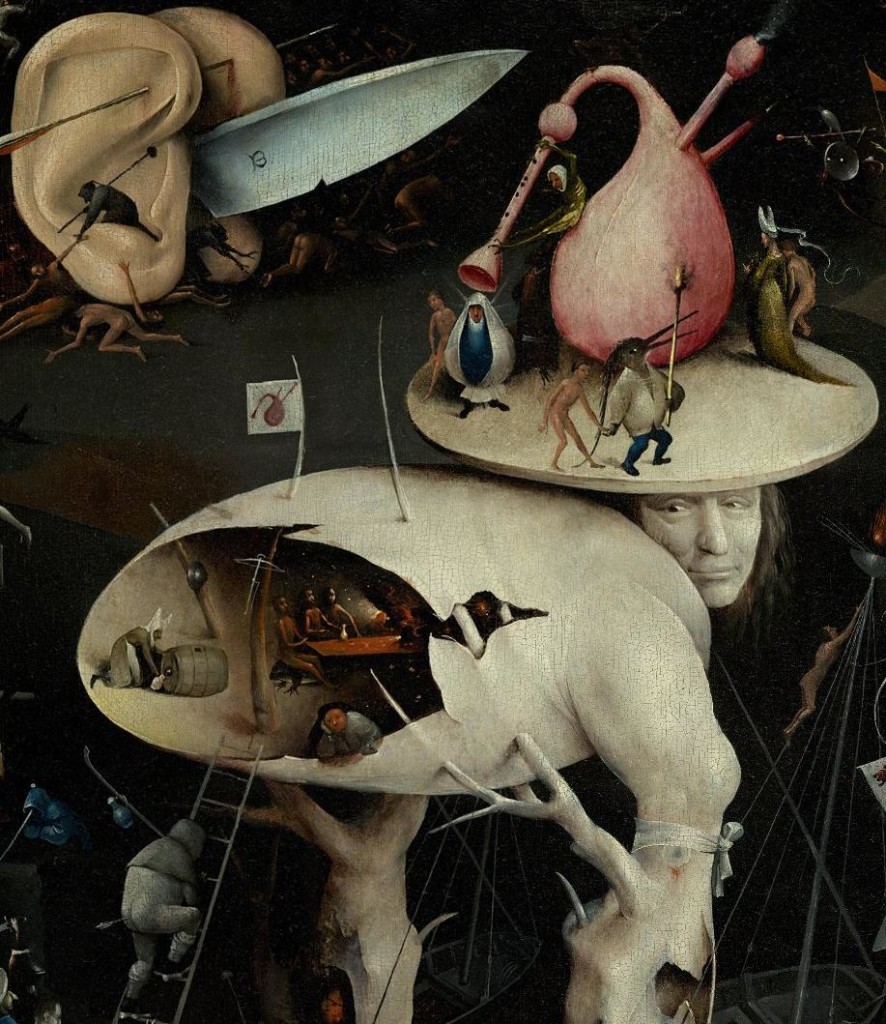
The Garden of Earthly Delights is one of at least eight triptychs by Hieronymus Bosch, an early Flemish painter active from the late 15th century. Triptychs were typically produced as didactic altarpieces, and those in the style of the Northern Renaissance frequently incorporate allegory and moralizing narratives.

In The Garden of Earthly Delights, the open panels from left to right depict the creation and Paradise, the garden for which the piece is titled, and Hell. Together, the scenes provide a terrifying and explicit warning about the consequences of sin.

The bizarre garden and cajoling figures in the center panel are replaced in the right panel by a burning city where monsters torture humans in frightening scenes. The moral was unambiguous to 16th century viewers – sin and corruption beget horror and torment.

Yikes! Happy Halloween.
The Garden of Earthly Delights has been in the collection of the Museo del Prado in Madrid since 1939.